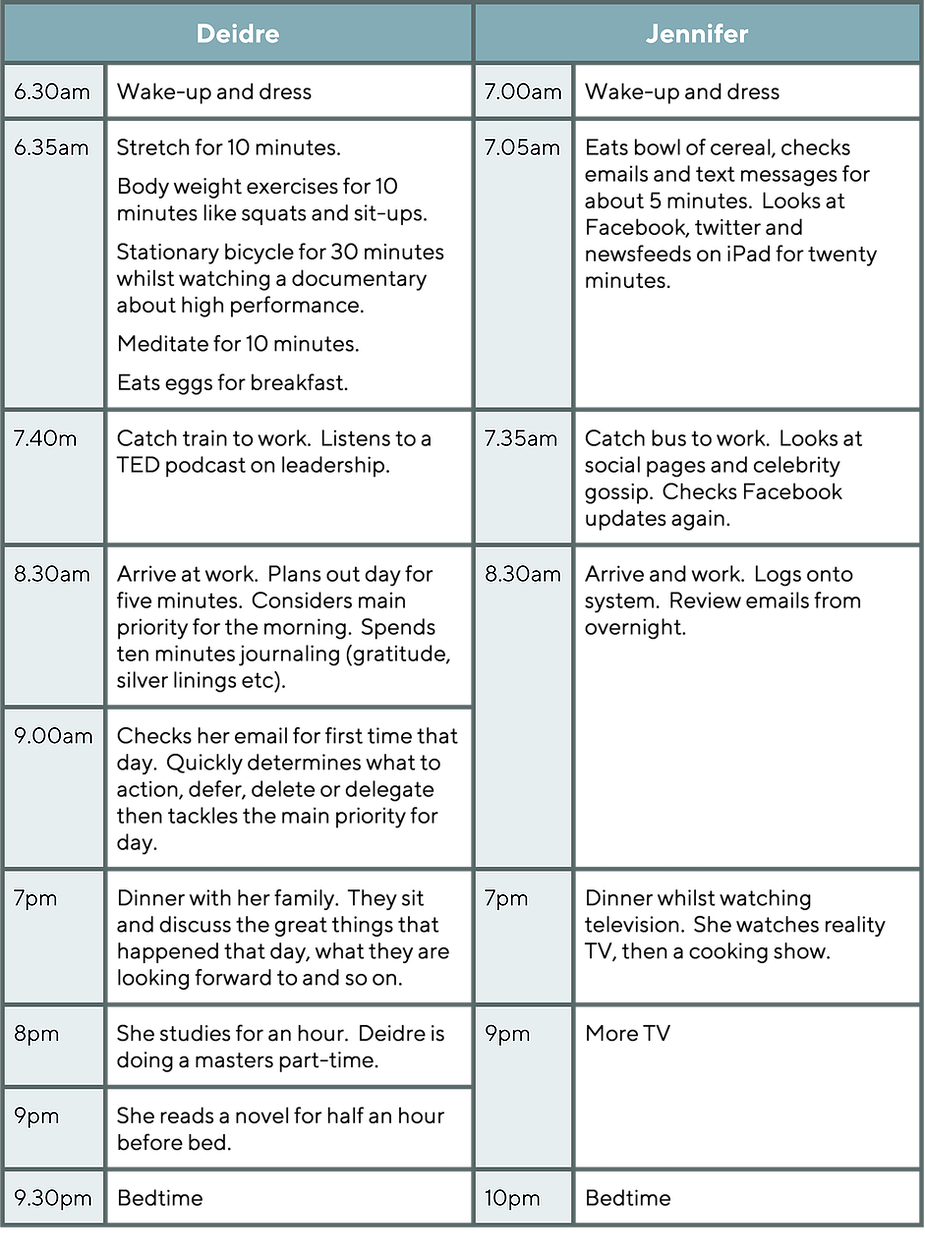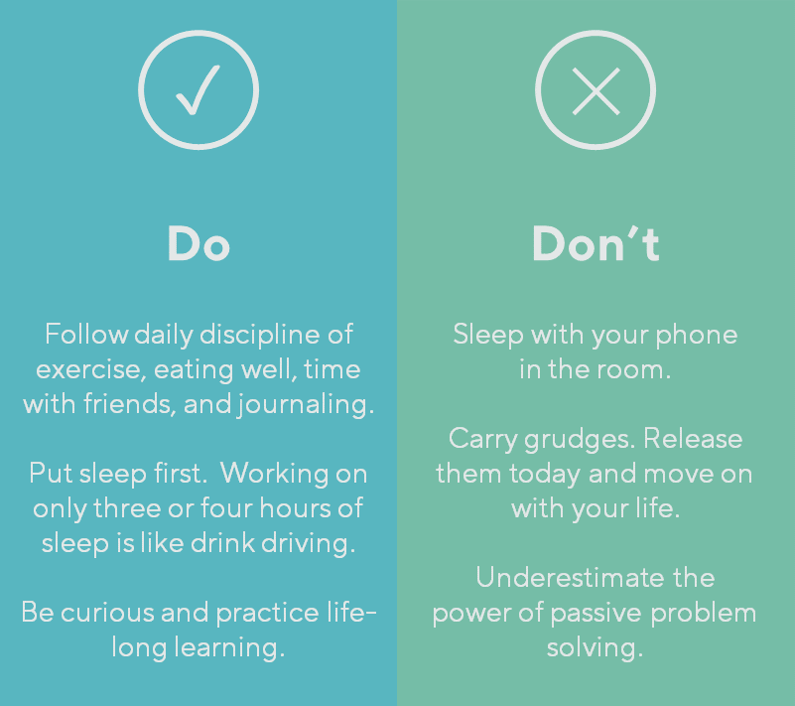In the third of this three-part series, Nick Humphrey outlines the strategies and techniques you can use to re-charge.

In many respects, the steps to re-charge all four aspects (body, mind, heart and soul) are deceptively simple and not particularly time consuming. But for many they are marginalised or fragrantly ignored.
You will need to practice re-charging so the activities become part of your daily routine. A simple but powerful daily ritual of:
-
Body: exercise, sleep and nutrition;
-
Heart: meaningful relationships with friends, family (eg, dinner with family or friends where you are present and in the moment and not thinking about work);
-
Mind: practising lifelong learning and curiosity (eg, watch a documentary or listen to a podcast or audio book); and
-
Soul: take a break for reflective time (eg, journaling, yoga, timeout in nature or meditation).
Re-charging is about preserving and investing in yourself. This is about taking time to sharpen the saw. These are jobs you simply cannot delegate to others.
Imagine you are holding a bucket of water with your arm out straight. You can hold it steady for a few minutes but after a while your arm gets sore. If you don’t put it down, you will eventually drop the bucket and spill the water. Now imagine that after you have held the bucket for a while you put it down and rest for an hour or two. When you pick it up again, you are refreshed and can hold it.
Some useful strategies for re-charging include unplugging, sensory modulation, regular short breaks and reducing “quadrant four” activities, like television:
Unplugging: Turn your phone off. Get regular time off-the-grid. When you come home from work at night don’t carry your phone around with you, checking every single text, missed call and email. Unless you’re a bona fide emergency response specialist (like a doctor, ambulance driver or firefighter), give yourself a break. Even during a work day, try having time-out from your emails. Leave your phone at your desk and go and work in the library or a café.
Sensory modulation: Another way of re-setting your mind is called sensory modulation. In essence, each of us has a primary sense (such as visual or audio) and we can use that to help achieve a quiet mind.
The five basic senses are sight, sound, touch, taste, smell as well as two extra senses being vestibular and proprioception. Dr Paul Phillips[1] has developed the following questionnaire to show which are your strongest senses:

Source: adapted from Dr Paul Phillips, “Notice what you are noticing”, 2015
Work through this questionnaire. Answer which sensory stimulation you like or not. If you answered yes to all four of the questions in a row, then that is likely to be a sense which is powerful for you. You might find that you rate highly in several of your senses.
Once you understand which senses are your strongest, you can then build some activities that engage those senses into your weekly routine. For example, if you answered “yes” four times on proprioception then head off to the gym several times a week or before an important meeting. Lifting heavy weights will help to clear your mind. Similarly, if you answered “yes” four times on vestibular, find time to ride a bike, go surfing, ride a motorbike or do skipping exercises. This will help re-set your mind. If you answered “yes” to audio questions, then you could pop your headphones on and go for a walk or play some music in your office.
Regular short breaks: Many of the benefits of re-charging can be achieved by taking regular short breaks. Simply standing up and grabbing a glass of water, or going for a short walk, can help re-energise you and facilitate the “diffuse” mode of analysis. At the very least, plan to take two or three fifteen breaks during the course of the working day, particularly around 3pm which is the least productive part of the day.
It is well known that our bodies follow a natural pattern while we sleep, of 90 minute cycles. This cycle also flows through the day as well, as we follow what is called “ultradian rhythm” of high to low focus and alertness. A study by Professor Ericsson found that elite performers like chess players, athletes, and musicians all practiced in focused sessions of no more than 90 minutes:
“To maximize gains from long term practice, individuals must avoid exhaustion and must limit practice to an amount from which they can completely recover on a daily or weekly basis.”[2]
Some other cycling techniques:
-
Pomodoro cycle: this is about working in short bursts. Set a timer for 25 minutes and take a short break of 5 minutes. Every few hours take a longer break of 30 minutes or so.
-
52-17 method: this is half-way between the Pomodoro and 90 minute block techniques. A recent study tracked the habits of productive employees and found that they worked for 52 minutes and then took 17 minute break. The researchers found those that worked in this pattern:
“The reason the most productive 10% of our users are able to get the most done during the comparatively short periods of working time is that their working times are treated as sprints. They make the most of those 52 minutes by working with intense purpose, but then rest up to be ready for the next burst.”[3]
Reduce quadrant four activities like television: A common excuse for not engaging in quality re-charging activities like reading or exercising is that people don’t have enough time. Everyone has the same amount of time – the President of the United States has the same time has an unemployed person. Twenty-four hours in a day or 168 hours a week.
A recent survey by AC Nielsen suggests the average American spends 5.1 hours per day watching television, which amounts to nine years in the average lifetime. [4] Another poll shows Americans are spending 2.38 hours per day surfing the Internet, including using apps on their smart phone.
If you just cut back on the time spent watching TV and surfing the Internet, you would free up considerable time to invest in quality re-charging activities like exercise, hobbies, reading and journaling.
Free up one hour or so every day for re-charging. Spend half an hour or more exercising (do some stretches, go for a walk or ride a bike, do some push-ups and sit-ups). Spend ten to fifteen minutes meditating. Before you start working do some journaling.
Compare Deidre and Jennifer:

Focus on building good habits: It is often said you only need to do something for twenty or so days and it becomes a habit.
Summary
“take regular time out to allow your body and mind to find balance.”
In summary some key strategies for refreshing:

About the author
Nick Humphrey is the managing partner of Hamilton Locke. He is the Chairman of the Australian Growth Company Awards and author of a number of best-selling books on business and leadership. His latest book is Maverick Executive: strategies for Driving Clarity, Effectiveness and Focus, published by Wolters Kluwer.
Sources
[1] Dr Paul Phillips, “Notice what you are noticing”, 2015
[2] Courtney Seiter, “The science of taking breaks at work: how to be more productive by changing the way you think of downtime,” Buffer Open, 21 August 2014, https://open.buffer.com/science-taking-breaks-at-work/
[3] Courtney Seiter, “The science of taking breaks at work: how to be more productive by changing the way you think of downtime,” Buffer Open, 21 August 2014, https://open.buffer.com/science-taking-breaks-at-work/
[4] A.C. Nielsen Co., “BLS American Time Use Survey”, 2013, http://www.statisticbrain.com/television-watching-statistics/